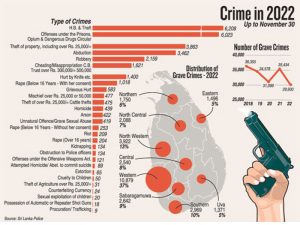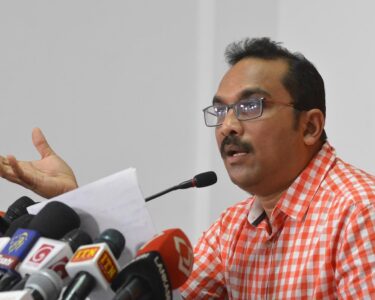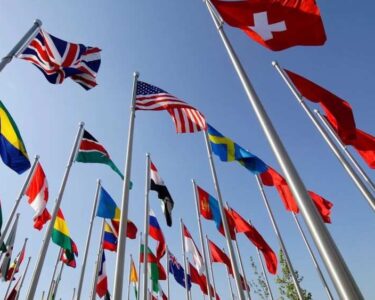In 2022, Sri Lanka underwent a pivotal transformation marked by political unrest, public protests, and the departure of the elected president, Gotabha Rajapasha. This period of upheaval led to a sharp economic decline, causing Sri Lanka to rapidly plunge into the ranks of the world’s poorest nations. The country struggled to meet its international loan obligations, exacerbating its financial woes.
Consequently, the tumultuous events of 2022 not only impacted the economy but also triggered a surge in organized criminal activities. Police data revealed a significant increase in serious crimes, with a 60% month-on-month rise throughout the year. Minor offenses also skyrocketed from 1,676 in January 2022 to 29,908 by November. The escalation included 32 reported deadly shootings by December, often linked to disputes among drug cartels believed to operate transnationally.
Overall Criminal Score:
The rise in criminality had repercussions on Sri Lanka’s overall criminality score, which was previously measured at 4.64 out of 10 on the Global Organized Crime Index. This score, driven largely by the country’s heroin, cannabis, and synthetic drug markets, reflected a significant increase in criminal activity during the period of unrest. While Sri Lanka ranked sixth for criminality in Southern Asia in the 2021 Index, its resilience score of 4.04 out of 10 positioned it in the ‘low resilience’ category. The 2023 Index is anticipated to reveal the impact of the escalating criminality on Sri Lanka’s standing
Most crimes occurred within the western province, with about 10,000 cases; the largest number of cases were reported by the Kelaniya Police Division. The division with 2,287 cases also tops the country-wise figures, followed by Anuradhapura with 2056 cases, Nugegoda with 2,018 cases, Negombo with 1709 cases, and Kurunegala, Mount Lavinia, Colombo North, Ratnapura, Gampaha, Kuliyapitiya, and Panadura with more than 1000 cases each.

An analysis of crime trends in 2022 highlighted a correlation between economic factors and heightened crime rates during times of crisis. This aligns with the criminal motivation theory, which suggests that economic stress incentivizes individuals to engage in illicit activities. Notably, a study by the University of Peradeniya found a direct link between the economic crisis and a surge in crime rates, citing a drastic increase in abductions and kidnappings.
Transnational crime syndicates seized opportunities in the unstable environment, capitalizing on the unprecedented crisis in Sri Lanka. Well-established criminal networks, particularly those controlling the country’s drug trades, benefited from the chaos. The heroin trade, scoring 6 out of 10 in the 2021 Index, played a prominent role in this criminal surge
Aragalaya and Crime :
Beyond economic variables, factors such as the presence of youth gangs, substance abuse, underreporting of crimes, and inadequate crime recording mechanisms significantly influenced crime trends in Sri Lanka. While the government attributed the increase in criminal activity to the diversion of police and security forces’ attention towards handling protests, criminologists contested this view. They argued that the rise in criminality reflected deeper-rooted and chronic social problems rather than a temporary diversion of law enforcement resource
A 2015 study by the World Bank estimated that the total cost of crime in Sri Lanka was approximately US$4.8 billion, or about 4.6% of the country’s GDP. This figure included the direct costs of crime, such as the value of stolen goods and property damage, as well as the indirect costs, such as the loss of productivity due to crime-related injuries and the emotional and psychological costs of victimization.







